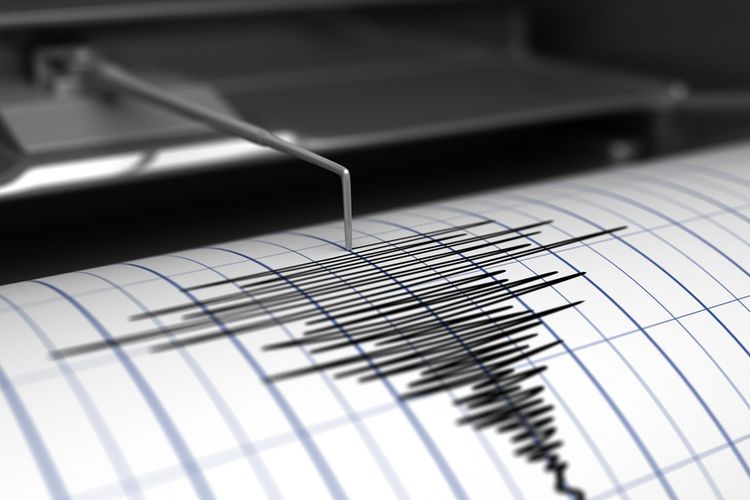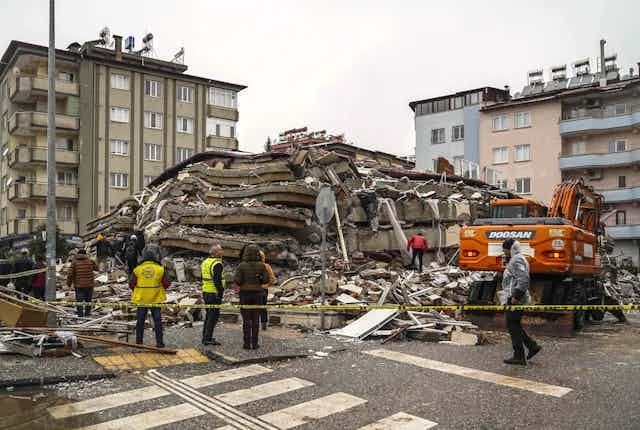Page Contents
- 0.1 The Earthquake Occurrence
- 0.2 Rare Occurrence in Melbourne Earthquake
- 0.3 Impact and Response
- 0.4 Earthquake Preparedness
- 0.5 Educate and Inform:
- 0.6 Building Standards:
- 0.7 Emergency Planning:
- 0.8 Personal Preparedness:
- 0.9 Looking Ahead
- 1 The Impact of the Melbourne Earthquake: Assessing the Aftermath
- 2 Author
Melbourne Earthquake, the vibrant capital city of the Australian state of Victoria, recently experienced a significant seismic event that sent shockwaves through the region. The earthquake, though relatively rare for this area, has sparked conversations about preparedness, safety measures, and the potential risks associated with seismic activity in urban environments. In this article, we delve into the details of the Melbourne earthquake, its implications, and the importance of earthquake awareness and readiness.

The Earthquake Occurrence
On the morning of September 22, 2021, Melbourne residents were startled by tremors that emanated from a magnitude 5.9 earthquake. The epicenter was located near the town of Mansfield, approximately 180 kilometers northeast of Melbourne. The quake, felt across large swathes of Victoria and even neighboring South Australia and New South Wales, caused buildings to sway, objects to fall, and prompted evacuations in some areas.
Rare Occurrence in Melbourne Earthquake
While earthquakes are not unheard of in Australia, they are relatively uncommon in Melbourne, particularly those of such magnitude. The region is situated in a stable continental interior, far from the tectonic plate boundaries where most seismic activity occurs. As a result, earthquakes of this size are infrequent, leading many residents to be caught off guard by the recent event.
Impact and Response
The Melbourne Earthquake caused minor damage to buildings and infrastructure in Melbourne, including reports of cracked walls, broken windows, and fallen debris. While there were no reports of serious injuries, the event served as a wake-up call for authorities and residents alike. Emergency services swiftly mobilized to assess damage, ensure public safety, and provide support to affected communities.
Earthquake Preparedness
The Melbourne earthquake underscores the importance of Melbourne Earthquake preparedness and resilience, even in regions not typically associated with seismic activity. While it may be impossible to predict precisely when and where earthquakes will occur, there are steps individuals and communities can take to mitigate risks and minimize the impact of such events:
Educate and Inform:
Increasing public awareness about earthquake risks, safety measures, and evacuation procedures is crucial. Educational campaigns and community drills can help ensure that residents know what to do in the event of an earthquake.
Building Standards:
Implementing and enforcing stringent building codes and standards can help mitigate damage and ensure structural integrity during seismic events. Retrofitting older buildings and infrastructure to meet modern seismic standards is also essential.
Emergency Planning:
Developing comprehensive emergency response plans and coordinating across government agencies, emergency services, and community organizations are essential for effective disaster management. This includes establishing communication networks, evacuation routes, and emergency shelters.
Personal Preparedness:
Individuals should take proactive steps to prepare themselves and their families for earthquakes by assembling emergency kits, securing heavy furniture and objects, and familiarizing themselves with safety procedures.

Looking Ahead
While the Melbourne Earthquake as a reminder of the unpredictable nature of seismic activity, it also presents an opportunity for reflection and action. By prioritizing earthquake preparedness, investing in resilient infrastructure, and fostering a culture of safety and awareness, Melbourne and other urban centers can better withstand and recover from future seismic events. Through collaboration, innovation, and community engagement, we can build safer, more resilient cities for generations to come.
The Impact of the Melbourne Earthquake: Assessing the Aftermath
The recent Melbourne Earthquake that rattled Melbourne and its surrounding regions on September 22, 2021, has left a profound impact on the community, infrastructure, and sense of security. While earthquakes are relatively rare in this part of Australia, the tremors serve as a stark reminder of the unpredictable forces of nature and the importance of preparedness. In this article, we explore the various impacts caused by the Melbourne earthquake and the ongoing efforts to recover and rebuild.
Structural Damage and Infrastructure Disruption
One of the most immediate consequences of the Melbourne earthquake was the damage inflicted upon buildings, roads, and other infrastructure. Reports emerged of cracked walls, shattered windows, and fallen debris, particularly in areas closest to the epicenter of the quake. While the overall extent of structural damage appears to be relatively minor, the event prompted safety inspections and temporary closures of buildings, disrupting daily life and business operations.
Transportation Disruptions
The Melbourne Earthquake also had implications for transportation networks, with disruptions reported across roads, railways, and public transit systems. Authorities temporarily halted train services and conducted safety assessments of railway tracks and bridges to ensure their integrity. Road closures and traffic diversions were implemented to address potential hazards posed by damaged infrastructure, causing delays and inconvenience for commuters.
Community Impact and Emotional Toll
Beyond the physical damage, the Melbourne earthquake had a significant impact on the local community’s sense of security and well-being. Many residents experienced fear, anxiety, and uncertainty during and after the tremors, grappling with the realization that earthquakes can occur even in regions not traditionally associated with seismic activity. The event served as a wake-up call for individuals and families to reassess their emergency preparedness plans and resilience in the face of natural disasters Bandar Slot Terpercaya.
Economic Repercussions
The economic impact of the Melbourne earthquake is still being assessed, but it is expected to have implications for businesses, insurers, and government agencies. Disruptions to commercial activities, property damage, and potential loss of revenue may pose challenges for local businesses and industries in the short term. Insurance claims and reconstruction efforts could also strain financial resources and infrastructure budgets in the affected areas.
Environmental Considerations
While Melbourne Earthquake themselves do not typically cause significant environmental damage, there may be secondary effects to consider, such as landslides, soil liquefaction, or changes to groundwater levels. Monitoring and mitigation measures may be necessary to address any environmental risks or hazards that arise as a result of the seismic event.

Earthquake Conclusion: Rebuilding and Resilience
In the aftermath of the Melbourne earthquake, communities are coming together to support one another, assess the damage, and begin the process of recovery. From structural repairs and infrastructure upgrades to emotional support and disaster preparedness initiatives, the response to the Melbourne Earthquake underscores the resilience and determination of Melbourne residents. While the impact of the earthquake may linger for some time, the city and its inhabitants are steadfast in their commitment to rebuilding stronger, safer, and more resilient communities in the face of future challenges.
Read More Article about “Personal Finance, Comprehensive Guide: Mastering Your Money“




